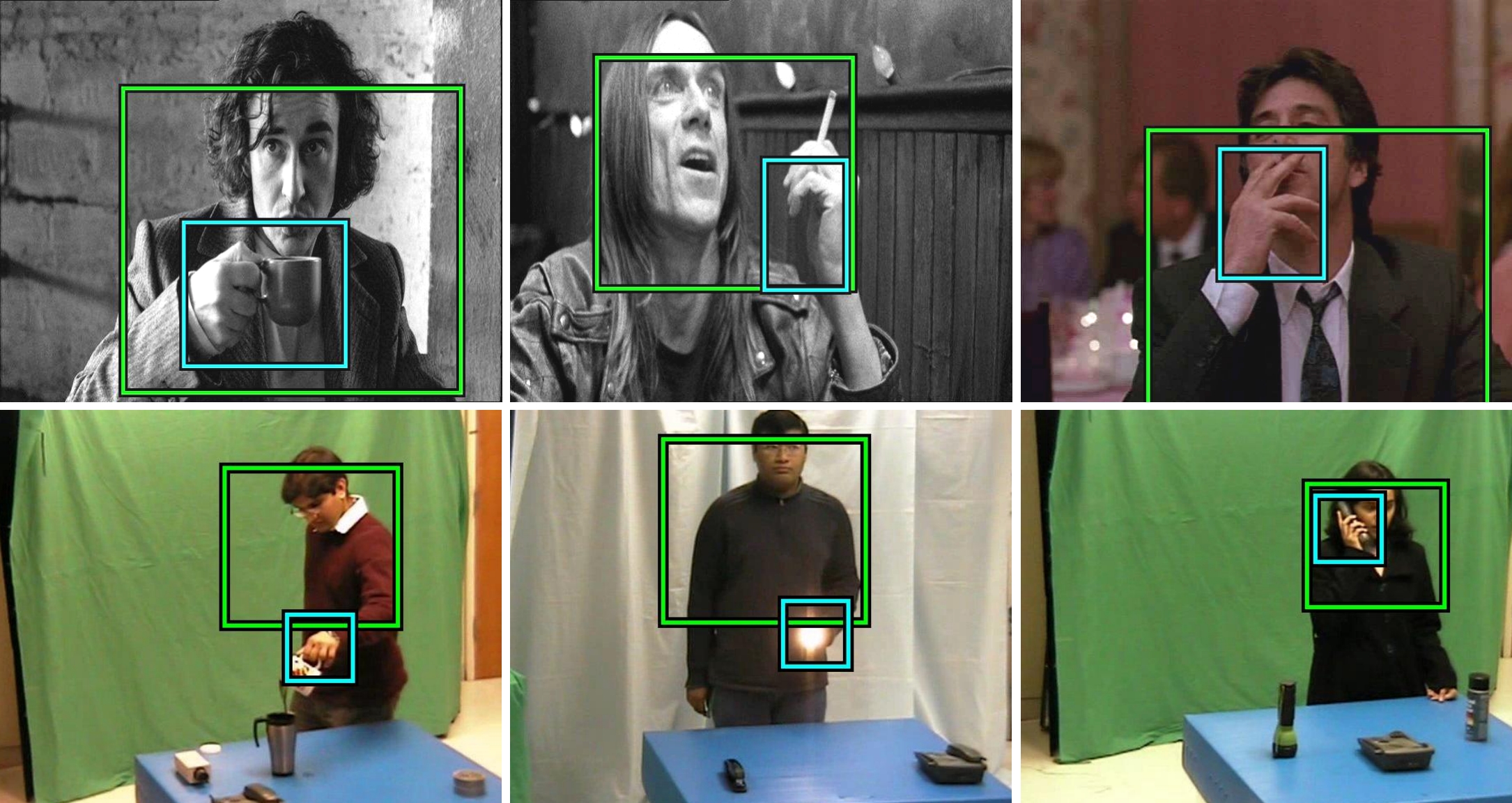Section: New Results
Human action recognition
Action recognition by dense trajectories
Participants : Alexander Kläser, Cheng-Lin Liu [Chinese Academy of Sciences] , Cordelia Schmid, Heng Wang [Chinese Academy of Sciences] .
Feature trajectories have shown to be efficient for representing videos. Typically, they are extracted using the KLT tracker or matching SIFT descriptors between frames. However, the quality as well as quantity of these trajectories is often not sufficient. Inspired by the recent success of dense sampling in image classification, in [18] we propose an approach to describe videos by dense trajectories. An overview of our framework is shown in Figure 4 . We sample dense points from each frame and track them based on dense optical flow. Our trajectories are robust to fast irregular motions as well as shot boundaries. Additionally, dense trajectories cover the motion information in videos well. We also investigate how to design descriptors to encode the trajectory information. We introduce a novel descriptor based on motion boundary histograms, which is robust to camera motion. This descriptor consistently outperforms other state-of-the-art descriptors, in particular in uncontrolled realistic videos. We evaluate our video description in the context of action classification with a bag-of-features approach. Experimental results show a significant improvement over the state of the art on four datasets of varying difficulty, e.g., KTH, YouTube, Hollywood2 and UCF sports.
|
Weakly supervised learning of interactions between humans and objects
Participants : Vittorio Ferrari [ETH Zürich] , Alessandro Prest, Cordelia Schmid.
In [7] we introduced a weakly supervised approach for learning human actions modeled as interactions between humans and objects. Our approach is human-centric: we first localize a human in the image and then determine the object relevant for the action and its spatial relation with the human. The model is learned automatically from a set of still images annotated only with the action label. Our approach relies on a human detector to initialize the model learning. For robustness to various degrees of visibility, we build a detector that learns to combine a set of existing part detectors. Starting from humans detected in a set of images depicting the action, our approach determines the action object and its spatial relation to the human. Its final output is a probabilistic model of the human-object interaction, i.e. the spatial relation between the human and the object. We present an extensive experimental evaluation on the sports action dataset from Gupta et al., the PASCAL 2010 action dataset, and a new human-object interaction dataset. In the PASCAL visual object classes challenge 2011 our approach achieved best results on three out of ten action classes and the best result on average over all classes.
Explicit modeling of human-object interactions in realistic videos
Participants : Vittorio Ferrari [ETH Zürich] , Alessandro Prest, Cordelia Schmid.
In [26] we introduced an approach for learning human actions as interactions between persons and objects in realistic videos. Previous work typically represents actions with low-level features such as image gradients or optical flow. In contrast, we explicitly localize in space and track over time both the object and the person, and represent an action as the trajectory of the object wrt to the person position. Our approach relies on state-of-the-art approaches for human and object detection as well as tracking. We show that this results in human and object tracks of sufficient quality to model and localize human-object interactions in realistic videos. Our human-object interaction features capture relative trajectory of the object wrt the human. Experimental results on the Coffee & Cigarettes dataset show that (i) our explicit human-object model is an informative cue for action recognition; (ii) it is complementary to traditional low-level descriptors such as 3D-HOG extracted over human tracks. When combining our human-object interaction features with 3D-HOG features, we show to improve over their separate performance as well as over the state of the art. See Figure 5 .
|
Actom sequence models for efficient action detection
Participants : Adrien Gaidon, Zaid Harchaoui, Cordelia Schmid.
In [12] we address the problem of detecting actions, such as drinking or opening a door, in hours of challenging video data. We propose a model based on a sequence of atomic action units, termed ”actoms”, that are characteristic for the action. Our model represents the temporal structure of actions as a sequence of histograms of actom-anchored visual features. Our representation, which can be seen as a temporally structured extension of the bag-of-features, is flexible, sparse and discriminative. We refer to our model as Actom Sequence Model (ASM). Training requires the annotation of actoms for action clips. At test time, actoms are detected automatically, based on a non-parametric model of the distribution of actoms, which also acts as a prior on an action's temporal structure. We present experimental results on two recent benchmarks for temporal action detection. We show that our ASM method outperforms the current state of the art in temporal action detection.
A time series kernel for action recognition
Participants : Adrien Gaidon, Zaid Harchaoui, Cordelia Schmid.
In [11] we address the problem of action recognition by describing actions as time series of frames and introduce a new kernel to compare their dynamic aspects. Action recognition in realistic videos has been successfully addressed using kernel methods like SVMs. Most existing approaches average local features over video volumes and compare the resulting vectors using kernels on bags of features. In contrast, we model actions as time series of per-frame representations and propose a kernel specifically tailored for the purpose of action recognition. Our main contributions are the following: (i) we provide a new principled way to compare the dynamics and temporal structure of actions by computing the distance between their auto-correlations, (ii) we derive a practical formulation to compute this distance in any feature space deriving from a base kernel between frames, and (iii) we report experimental results on recent action recognition datasets showing that it provides useful complementary information to the average distribution of frames, as used in state-of-the-art models based on bag-of-features.




